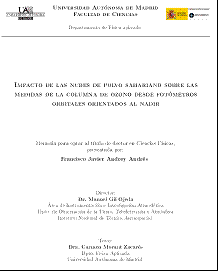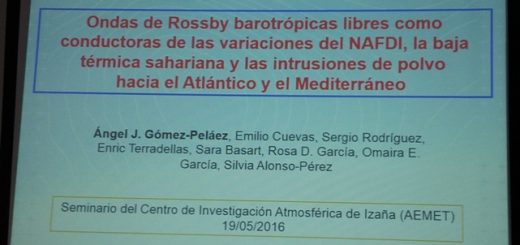Dr. Javier Andrey’s PhD about the impact of desert dust intrusions on total column ozone observations from satellite-borne sensors

Dr. Javier Andrey has obtained his Ph.D. at the Universidad Autónoma de Madrid on June 7, 2011. He defended his doctoral thesis entitled “Impact of Saharan dust clouds on ozone column measurements from nadir oriented orbital photometers” as a researcher of the Department of Instrumentation and Atmospheric Research, National Institute of Aerospace Technology (INTA). The thesis was supervised by Dr. Manuel Gil (Head of the Department of Instrumentation and Atmospheric Research, INTA) and person in charge of the DOAS program being carried out at the Izaña Observatory since 1993. This doctoral thesis is based on data from two airborne campaigns TROMPETA I and TROMPETA II conducted by INTA in Tenerife, in cooperation with the Center for Atmospheric Research Izaña (CCIA-AEMET) in July 2005 2006, respectively,as well as on data from ozonesonde, Brewer spectrophotometer, FTIR spectrometer and DOAS spectrometer, which are part of several research programs of the CIAI.
Dr. Andrey’s work focuses on answering an important question: the observed decrease in total column ozone from satellite-based sensors in presence of atmospheric dust clouds, is an “artifact,” as proposed by NASA researchers Torres and Barthia (Torres & Barthia, 1999), or on the contrary, this ozone decrease is real? Dr. Andrey, using information from numerous ozone and aerosols observation platforms, both in situ and remote (ground-based and satellite), answers the question by showing that reductions in column ozone observed under heavy Saharan dust intrusions are real. He also points out the possible error in the Torres&Barthia’s hypothesis, no refuted until this work: Torres and Barthia assumed a simple scattering albedo coefficient significantly lower than the actual one in their radiative transfer model for computing ozone estimations.
Download the pdf Thesis copy here






